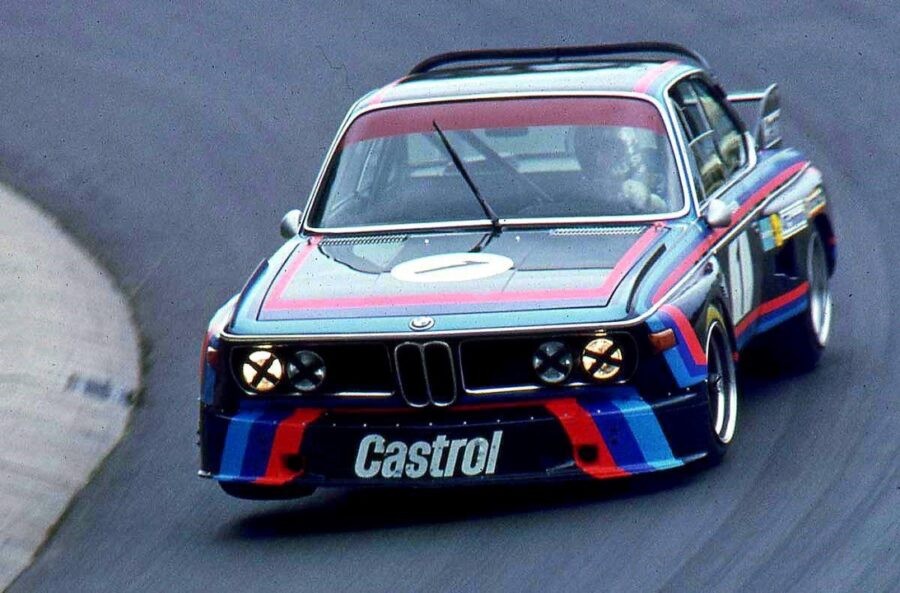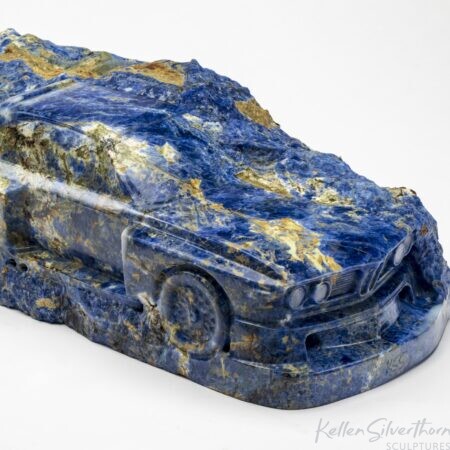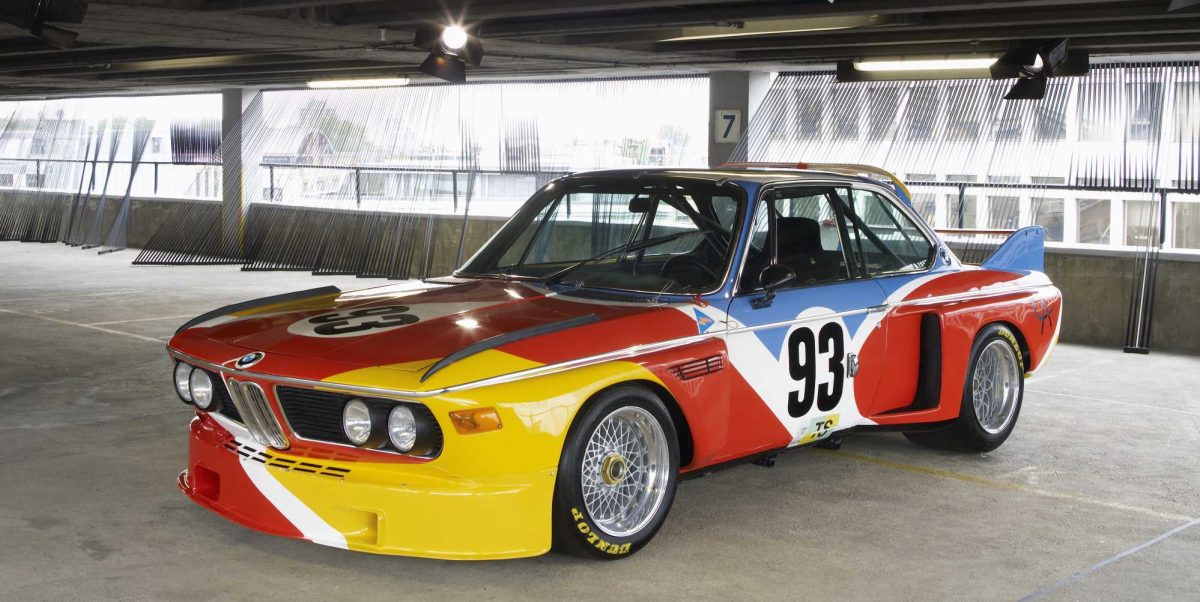Blau Bat – inspired by the BMW E9 CSL “Batmobile”
hover and click over individual sculpture photographs to enlarge
THE CAR
The E9 re-established BMW as a purveyor of fine coupes, with both luxury and sporting pretensions. “Batmobile” E9 versions signaled BMW staking its claim in the high performance marketplace, and at the racetrack.
Wilhelm Hofmeister is usually credited with the 1968-debut E9 styling, as BMW’s design chief from 1955-70. The E9 design no doubt drew heavily from Bertone’s 1962-65 BMW 3200 CS design. The styling of both were unique in its day, and both have aged rather well. My first premium car was a used 1971 BMW CS. Sadly my CS had the automatic transmission, but that made the price right.
Adults could fit comfortably as rear passengers. Leather seats, wood trimmed dash, power windows, air conditioning, and sunroof represented all of the modern conveniences of the day. Interesting the 1971 curb weight was a svelte 3131 pounds, while in comparison today’s marketplace equivalent 8 Series BMW coupe is a 4440 lb leviathan, almost a 50% weight gain.
The E9 CS competed strongly in the premium import coupe field. Mercedes’ coupe styling of the day was comparatively staid. Jaguar, Audi, and Porsche didn’t offer in-period direct coupe competition, and Lexus / Infiniti were decades into the future. Aston Martin, Ferrari, Iso, Lamborghini and Maserati did offer coupe competition, but at much higher price points, and with thin dealer networks.
A total of 30,546 E9s were made spanning 1968-75. Assembly was outsourced by BMW to coach-builder Karmann.
Within the total E9 production, CSL Homologation cars accounted for 1,265 units. The “L” stood for Leicht (or Light), at ~2800 pounds. CSL weight reduction was achieved by using thinner steel in the unibody, deleting bumpers, trim and soundproofing. Aluminum alloy replaced steel construction for the doors, trunk lid, and engine cover. The subset of 500 Right Hand Drive CSLs skipped many of these weight-saving modifications. Later CSL production cars received the subtle aero bits nicknamed “Batmobile” (air dam, rear wing, and front fender-top fins) . For 1973 the CSL received an upgraded 3.2L I6 with 210 hp.
The racing versions of the CSL saw far more horsepower. Version competed in FIA Group 2, Group 4, Group 5 as well as IMSA — each with some success. The CSL won the European Touring Car Championship in 1973, and 1975-79, as well as a LeMans class victory in 1973. The first two BMW Art (Racing) Cars were 3.0 CSLs; the first was painted by Alexander Calder and the second by Frank Stella.
Motorsport history buffs will remember the Porsche 911 RS and RSR had far more success in-period than the CSL. Its apples and oranges though, comparing the 911 to the larger E9 CSL…. (163” vs 183” in length and 2370 lbs vs 2800 pounds for homologation models).

Hans Stuck in period at the “Ring. Photo Credit Twitter
I suppose I’m old school on this toic, but to me a “real” BMW has a normally aspirated inline six cylinder, as did the E9 CS and CSL.
THE STONE
The BMW Roundel logo has a great story. It is inspired by a propeller, as BMW got its start more than 100 years ago building piston engines for aircraft. Though officially the BMW acronym is for Bayern Motor Werks (Bavarian Motor Works), the logo lends itself to another well-known color-coded slang, Blau mit Weiss (Blue with White).
Sodalite is a silica-poor blau mit weiss stone. The more Blau the sodalite, the harder it is to find and the more valuable. Generally, blue sculpting stone of any variety is hard to find in quantities suitable for my creations.
Sourcing stone for a sculptor is always an adventure. Few were as big an adventure for me as sourcing sodalite from its most famous origin in Bolivia. Friend and colleague “Stone’Eng” (Patrick) put together a consortium of five interested artists. Each of us had to choose from photographs the various sodalite blocks on offer in Bolivia. I chose factoring quality over quantity. We then split the shipping costs from Bolivia based on the proportion of the purchase weight our block(s) represented.
The challenges were all worth it. The Sodalite is a great fit for BMW sculptures. I’m sure it will prove suitable for other brands too. Sodalite Royale is no wallflower. It catches your eye from across the room, with its vivid deep blue (trending to purple-blue) and contrasting white / yellow / gold veining and mottle.
The Blau Bat sculpture depicts an E9 CSL Group 4 race car emerging from a roughened block of sodalite. Not every art enthusiast or car fan subscribes to the depiction — but those that do are passionate about their appreciation for this interpretation of stone car art.








